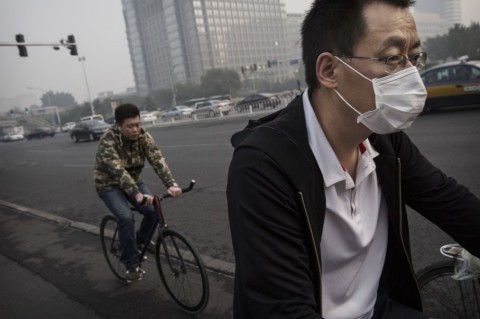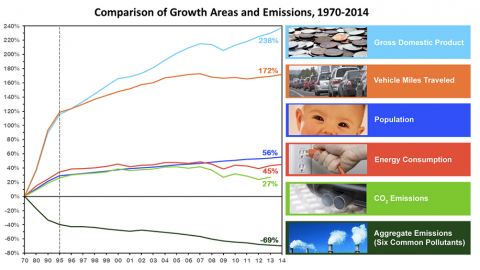
Residents of just four American metropolitan areas have had regular access to healthy air in recent years.
Those four places — Burlington-South Burlington, Vt.; Honolulu; Elmira-Corning, N.Y.; and Salinas, Calif. — had the pleasure of breathing air consistently free of unhealthy ozone, short-term particle and year-round particle pollution from 2012 to 2014, according to a new national air quality report card from the American Lung Association.
The air everywhere else was less consistently clean.
“Everyone has the right to breathe healthy air,” American Lung Association President and CEO Harold P. Wimmer said in a news release announcing the group’s annual rankings. “We simply must do more to protect the health of Americans,” he added.
The rankings are based on three measures: ozone pollution and particle pollution over the short-term (24 hours) and longer-term (annual averages).
Overall, stronger federal standards have contributed to a reduction in air pollution, even as the population, economy, energy use and miles driven by the American populace rise, as shown in the Environmental Protection Agency chart below.

Air pollution emissions have dropped steadily since 1970, even as the population, economy, miles traveled, and energy consumed have grown. (EPA)
The American Lung Association credits the overall pollution decline to the 1970 Clean Air Act, as well as updates to such standards over time. The clean-up of power plants drove down year-round particle and ozone pollution, particularly in states in the middle and eastern portions of the country, the American Lung Association reports. Retiring old, dirty diesel engines helped, too.
And it shows. Of the 20 most-polluted cities, all but four had their lowest year-round particle pollution levels in the history of the 16-year-old report.
Los Angeles saw historically low levels of ozone pollution, though that still wasn’t enough to knock it from its spot atop the list of cities suffering from the highest such pollution levels, a place it has claimed in all but one of 16 such reports. Bakersfield, Calif., claimed the top spot on both lists of particle pollution.
Cities made the most progress in levels of year-round particle pollution. Seventeen of the most-polluted cities reduced such pollution levels since last year. Still, seven metropolitan areas saw increases. They included Bakersfield, Visalia-Porterville-Hanford, San Jose-San Francisco-Oakland in California, along with Harrisburg-York-Lebanon in Pennsylvania and Louisville, Ky.
Previous progress on short-term particle pollution, however, was undone. Bakersfield topped the list with the highest number of days with unhealthy particle pollution levels, while 11 other metro areas also saw more unhealthy days than in the last report. For that, the authors blame climate change, at least in part. Major changes in drought and rainfall levels affect the short-term particle pollution of the air, contributing to high numbers of days with unhealthy particle levels from 2012 to 2014.
Most cities improved their ozone pollution levels. Of the cities with the highest levels in the report.
To continue reducing pollution levels, the American Lung Association advocates for a strengthening of the Clean Air Act against political attacks. It also advocates for further regulation of power plants, oil and gas operations and diesel vehicles and heavy equipment. It also calls for a stronger response to air pollution that blows across state lines and a better national pollution monitoring network.
“We can and must do more to save lives and fight climate change,” Wimmer said.